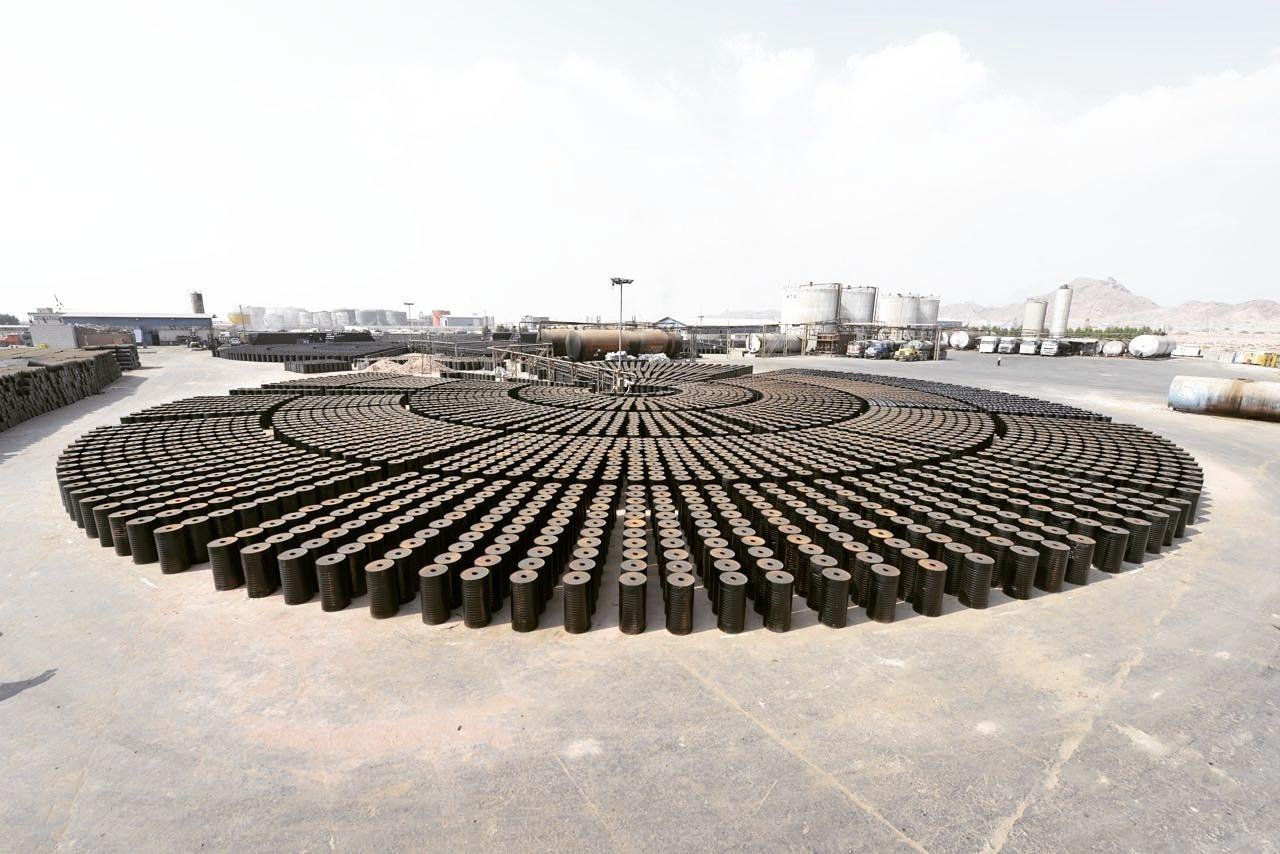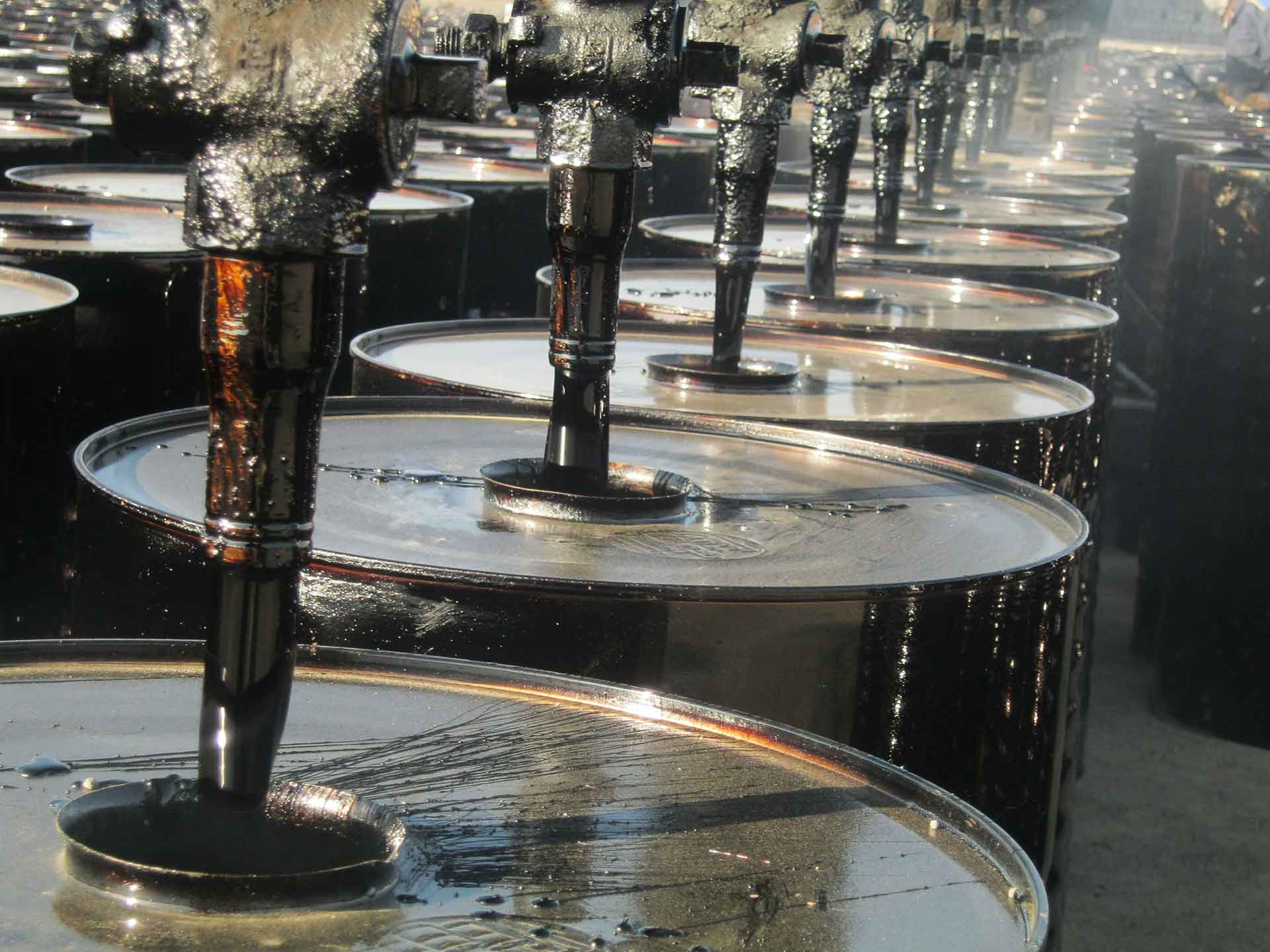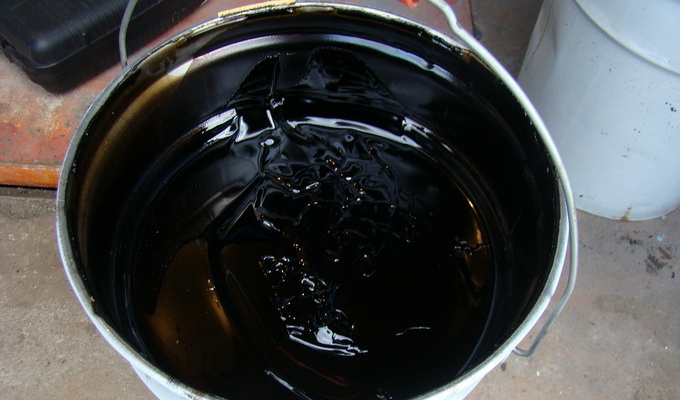
Oxidized Bitumen 90-10
Oxidized Bitumen 90-10 is made by ongoing or Staggered Blowing Process. Heated Penetration bitumen under controlled environment is blown with air which controls oil content in bitumen while it oxidized.
The different grades for suited applications produced are designated by two numbers to indicate the mid-points of their softening point and penetration ranges.
In addition vapour of oxidized bitumen or mist can cause headache, nausea, irritation of nose and lungs. Oxidized bitumen eye contact can cause slight irritation. Also its prolonged or continual skin contact can reasons slight skin irritation. In addition, oxidized bitumen can cause thermal burns which may finish in permanent skin injury. Furthermore hot product may cause severe eye burns and/or vision defect. oxidized bitumen is not classified as-dangerous for the atmosphere. Also as inflammable.
Contact of hot material with water will finish in vio-Lententide growth and splashing or boil-over may occur.
Application of Blown Bitumen 90/10:
Blown Bitumen 90/10 is produced by either Continuous or Staggered Blowing Process. Heated Penetration Grade Bitumen under controlled environment is blown with air which controls the Oil Content in the Bitumen while it oxidized. The different grades for suited applications produced are designated by two numbers to indicate the mid-points of their softening point and penetration ranges.
Chemical Mine World Oxidized Bitumen 90/10 is widely used as an anti-slip layer compound in the piling industry, for the manufacture of roofing felts, the roofing and waterproofing industries, for sound dampening felts and under carriage sealant in the automotive industry, electric cable joint protection, joint filling compound, carpet-backing, corrosion protection, acoustic panels, chemical, fuel, Manufacture of paints, sealant compound, and many others.
Also used in sealing saw cuts and joints where expected movements are minimum.
It is also used in the manufacturing of bituminous marine mastic for the oil & gas pipeline joints.
Further, Oxidized Bitumen is used in the manufacture of bituminous marine mastic, which is required for the oil and gas pipeline joints.
Also used in sealing saw cuts and joints where expected movements are minimum.
It is also used in the manufacturing of bituminous marine mastic for the oil & gas pipeline joints.
Further, Oxidized Bitumen is used in the manufacture of bituminous marine mastic, which is required for the oil and gas pipeline joints.
Oxidized bitumen is used as sealing of expansion joints.
Oxidized bitumen is used as repair of joints or cracks.
Oxidized bitumen is used as fixation of parquet floors.
Oxidized bitumen is used as adhesive to be used in thermal insulation.
Oxidized bitumen is used as repair of unexposed cracks.
Oxidized bitumen is used as bonding of wet briquettes
Oxidized bitumen is used in various industries like roofing, isolation, insulation flooring, mastics, pipe coatings, electrical applications.
Technical Advantages of Blown Bitumen 90/10:
- Durability
- Flexibility
- Water Resistant
- Chemical Stability
Compared to paving grade bitumen:
- Reduced temperature susceptibility
- Exhibits a more ‘solid’ nature at ambient temperatures
- High penetration index
Handling / Storage:
Heating of packaged bitumen is a critical phase in most of the final uses. Typically, the packaged material is heated and melted in boilers out on site.
However, control at the heating phase is very important in terms of health and safety as well as in maintaining the quality of the product.
Note must be taken of the maximum safe handling temperature of 230 C and this should not be abused. Bitumen is a poor conductor of heat, consequently, control of the heating phase is of paramount importance.
The Blown Bitumen material should be broken up prior to placement in the boiler. This exposes a larger surface area to the heat and encourages a more even heating regime. Without the larger exposed surface area, aggressive heating at the base and sides of the boiler may well result in localized overheating, altering the characteristics of the Chemical Mine World modified bitumen and potentially causing thermal cracking of the bitumen, creating the release of low lash vapors.
The flash point of the oxidized bitumen then becomes irrelevant; as these low flash vapors determine the fire risk.
Melted bitumen should not be left in the boiler and reheated from cold, as there is then a high potential for localized overheating around the heating area (lack of convection means poor heat transfer) and potential development of a pressurized pocket of low flash vapors.
Be aware of the placement of any temperature monitoring or control devices. As a result of the poor thermal conductivity of the bitumen, a thermometer in the bitumen some distance from the heat source could read significantly different (even hundreds of degrees) from the true temperature of the bitumen near the heat source.
For Health and Safety information, please make reference to the relevant MSDS.
Health & Safety:
Workers should wear protective masks, gloves, and goggles during application. The asphalt can be removed from equipment and tools with kerosene or gasoline. Care should be taken when heating Blown Bitumen 90/10 to avoid over heating.
Packing of blown asphalt 90/10:
The Chemical Mine World is manufacturer of blown asphalt 90/10 in various packing including kraft bag, meltable plastic bag, drum and bulk blown asphalt 90/10 from penetration grade bitumen, which is blown by hot air in a controlled process until the desired specification
is reached. The Chemical Mine World oxidised bitumen 90/10 can be supplied in any grade and are designated by two numbers to indicate the softening point and penetration ranges.
The oxidized asphalt grade 90/10 means softening point is 90°c and penetration is 10 desimillimiter is produced in compliance and conformity to ASTM standard and meets the following specification.
Data Sheet of Blown Bitumen 90/10:
| Bitumen 90/10 | Test method | Unit | Specification |
| Specific gravity @25/25 C | ASTM D70 | (Kg/m3) | 1.05 approx. |
| Penetration @ 25°c | ASTM D5 | mm/10 | 5-15 |
| Softening point °c | ASTM D36 | °C | 85/95 |
| Ductility @25 °c | ASTM D113 | Cm | 1.5min |
| Loss on heating(wt) % | ASTM D6 | Wt. % | 0.2 max |
| Flash point c | ASTM D92 | °C | 250 min |
| Solubility is CS2(wt) % | ASTM D4 | Wt. % | 99.5 max |
| Spot test | A.A.S.H.O.T102 | — | Negative |
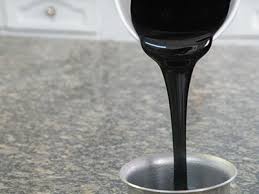
Oxidized Bitumen 85/40
Oxidized Bitumen 85/40 or Blown bitumen is produced by blowing hot air into the penetration bitumen. This action makes the bitumen more rubbery than its original formula and it becomes harder bitumen. This bitumen recovery the weight loss under heating. Due to low thermal sensitivity, the softening point is much higher than regular bitumen and the penetration index (PI) is higher than road construction bitumen (8>PI>2) due to the letter has a gel-like structure because of asphalt accumulation. Oxidized bitumen 85/40 is a special and most usable grade in Scandinavia.Oxidized Bitumen 85/40 is produced by the air-blowing of penetration grade bitumen.
This is done at high temperatures, resulting in a material of a much higher penetration index.
Chemical Mine World Oxidized Bitumen 85/40 is based on petroleum bitumen which is made by blowing bitumen 60/70 by very hot air.
The designation of the Oxidized Bitumen 85/40 refers to the midpoint of the softening point acceptance criteria.
Chemical Mine World Oxidized Bitumen 85/40 is produced by either Continuous or Staggered Blowing Process.
Heated Penetration Grade Bitumen under controlled environment is blown with air which controls the Oil Content in the Bitumen while it oxidized.
The different grades for suited applications produced are designated by two numbers to indicate the mid-points of their softening point and penetration ranges.
Chemical Mine World Oxidized Bitumen 85/40 is based on petroleum bitumen which is made by blowing bitumen 60/70 by very hot air.
In addition, the numbers relate to the midpoint of the material’s softening point and penetration respectively.
The softening point value measured by Ring and Ball method as determined by ASTM D36. Also, the penetration value is in 1/10 mm as determined by IP 49 or ASTM- D5.
Application of Oxidized Bitumen 85-40:
Oxidized Bitumen 85/40 is a solid or semi-black solid material and gradually liquid when heated.
Oxidized Bitumen grades are blown or oxidized Asphalt ‘s which are produced by passing air through soft bitumen under controlled temperature conditions. This process gives the bitumen more rubbery properties than penetration or hard grade bitumen's and a variety of uses in industrial applications.
Oxidized Bitumen grades are blown or oxidized Asphalt ‘s which are produced by passing air through soft bitumen under controlled temperature conditions. This process gives the bitumen more rubbery properties than penetration or hard grade bitumen's and a variety of uses in industrial applications.
This bitumen is mostly used in industry, such as roof insulation, flooring, industrial mastic, pipe coating, and paints. Specification of Oxidized bitumen is categorized based on softening points and penetration rate. Also, Oxidized bitumen 85/40 using as raw material for bitumen coat, roofing, insulation, and isolation bitumen membrane sheet.
Technical Advantages of Oxidized Bitumen 85/40
Technical Advantages of Oxidized Bitumen 85/40
- Durability
- Flexibility
- Water Resistant
- Chemical Stability
- Reduced temperature susceptibility
- Exhibits a more ‘solid’ nature at ambient temperatures
- High penetration index
Handling / Storage:
Heating of packaged bitumen is a critical phase in most of the final uses. Typically, the packaged material is heated and melted in boilers out on site.
However, control at the heating phase is very important in terms of health and safety as well as in maintaining the quality of the product.
Note must be taken of the maximum safe handling temperature of 230 C and this should not be abused. Bitumen is a poor conductor of heat, consequently, control of the heating phase is of paramount importance.
The Oxidized Bitumen material should be broken up prior to placement in the boiler. This exposes a larger surface area to the heat and encourages a more even heating regime.
Without the larger exposed surface area, aggressive heating at the base and sides of the boiler may well result in localized overheating, altering the characteristics of the Chemical Mine World modified bitumen and potentially causing thermal cracking of the bitumen, creating the release of low lash vapors.
The flash point of the oxidized bitumen then becomes irrelevant; as these low flash vapors determine the fire risk.
Melted bitumen should not be left in the boiler and reheated from cold, as there is then a high potential for localized overheating around the heating area (lack of convection means poor heat transfer) and potential development of a pressurized pocket of low flash vapors. Be aware of the placement of any temperature monitoring or control devices.
As a result of the poor thermal conductivity of the bitumen, a thermometer in the bitumen some distance from the heat source could read significantly different (even hundreds of degrees) from the true temperature of the bitumen near the heat source.
Health & Safety:
Workers should wear protective masks, gloves, and goggles during application. The asphalt can be removed from equipment and tools with kerosene or gasoline. Care should be taken when heating Oxidized Bitumen 85/40 to avoid overheating. For Health and Safety information, please make reference to the relevant MSDS.
Packing of blown asphalt 85/40:
The Chemical Mine World is manufacturer of blown asphalt 85/40 in various packing including kraft bag, meltable plastic bag, drum and bulk blown asphalt 85/40 from penetration grade bitumen, which is blown by hot air in a controlled process until the desired specification is reached. The Chemical mine World oxidised bitumen 85/40 can be supplied in any grade and are designated by two numbers to indicate the softening point and penetration ranges. The oxidized asphalt grade 85/40 means softening point is 85°c and penetration is 40 desimillimiter is produced in compliance and conformity to ASTM standard and meets the following specification.
Data Sheet of Oxidized Bitumen 85/40:
| Bitumen 85/40 | Test method | Unit | Specification |
| Specific gravity @25/25 C | ASTM D70 | (Kg/m3) | 1.05 approx. |
| Penetration @ 25°c | ASTM D5 | mm/10 | 35/40 |
| Softening point °c | ASTM D36 | °C | 80/90 |
| Ductility @25 °c | ASTM D113 | Cm | 3 |
| Loss on heating(wt) % | ASTM D6 | Wt. % | 0.2 max |
| Flashpoint c | ASTM D92 | °C | 260 min |
| Solubility is CS2(wt) % | ASTM D4 | Wt. % | 99 min |
| Spot test | A.A.S.H.O.T 102 | — | Negative |
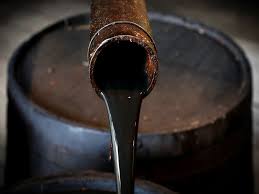
Oxidized Asphalt 105/35
Oxidized Asphalt 105/35 is produced by either Continuous or Staggered Blowing Process. Heated Penetration Grade Bitumen under controlled environment is blown with air which controls the Oil Content in the Bitumen while it oxidized. The different grades for suited applications produced are designated by two numbers to indicate the mid-points of their softening point and penetration ranges.
Oxidized Asphalt 105/35 is the semi-solid oxidized grade of pure petroleum bitumen categorized in polycyclic aromatic hydrocarbons is normally used for different purposes in the construction business.
Oxidized Asphalt 105/35 is the suitable grade of oxidized asphalt to use as bonding compounds as hot melt adhesive at an application rate of approximately 1 Kg/m3 to bond the preformed sheets together and to structure which is made by blowing bitumen 60/70 by very hot air.
Chemical Mine World is one of the market leaders in Production, Exports, and brokerage different grades of Blown Asphalt with excellent quality.
Our sales team is committed who understands your requirements due to many years of experience in supplying the bitumen products. If you are more interested in product information or need to place an order contact or inquire our Sales team.
Application of Oxidized Asphalt 105/35:
Oxidized Grade Bitumen shall be broken up into small pieces and heated slowly to the application temperature of 220ºC to 230ºC.Oxidized Bitumen should be heated double temperature against the softening point to be able to have flow and viscosity.
Blown asphalt also is the aesthetic adhesive substrate for asphalt membranes. In addition metal and concrete protective coating under atmospheric conditions.
Oxidized Bitumen 105-35 is used for coating of pipelines. Also impregnated of the coating of papers and boards.
Bonding agent for tiles and mastic also bonding agent for cork plates and adhesive for roofing felts. Furthermore, Blown bitumen is adhesive for laminated boards for protection for electrical wires.
Hard asphalt grades also suitable for sealing saw cuts and joints where there is expected to be the minimum amount of moving in the joint. Their wide temperature range prevents bleeding in high-temperature uses.
Oxidized asphalt can also be used in industrial usages like roofing, flooring, mastics, pipe coatings, electrical roles.
Storage/Handling:
10 Years with multi time heating and colding, please refer to MSDS. Pars Universal Bitumen Company guaranty the quality of Oxidized Bitumen 150/5 with the arrangement of international warden to check quality and quantity of product during the loading to the vessel. Also controlling production by QC by batch test report before shipping.
Health & Safety of Oxidized Asphalt 105/35:
Workers should wear protective masks, gloves, and goggles during application. The asphalt can be removed from equipment and tools with kerosene or gasoline. Care should be taken when heating Oxidized Asphalt 105/35 to avoid over heating.Packing of blown asphalt 105/35:
The Chemical Mine World is manufacturer of blown asphalt 105/35 in various packing including kraft bag, meltable plastic bag, drum and bulk blown asphalt 105/35 from penetration grade bitumen, which is blown by hot air in a controlled process until the desired specification is reached.The Chemical Mine World oxidized bitumen 105/35 can be supplied in any grade and are designated by two numbers to indicate the softening point and penetration ranges.
The oxidized asphalt grade 105/35 means softening point is 105°c and penetration is 35 desimillimiter is produced in compliance and conformity to ASTM standard and meets the following specification.
Datasheet of Oxidized Asphalt 105/35:
| Bitumen 105/35 | Test method | Unit | Specification |
| Specific gravity @25/25 C | ASTM D70 | (Kg/m3) | 1.05 approx. |
| Penetration @ 25°c | ASTM D5 | mm/10 | 30/40 |
| Softening point °c | ASTM D36 | °C | 100/110 |
| Loss on heating(wt) % | ASTM D6 | Wt. % | 0.2 max |
| Flash point c | ASTM D92 | °C | 250 min |
| Solubility is CS2(wt) % | ASTM D4 | Wt. % | 99.5 max |
| Specific gravity @25/25 C | ASTM D70 | (Kg/m3) | 1.05 approx. |

